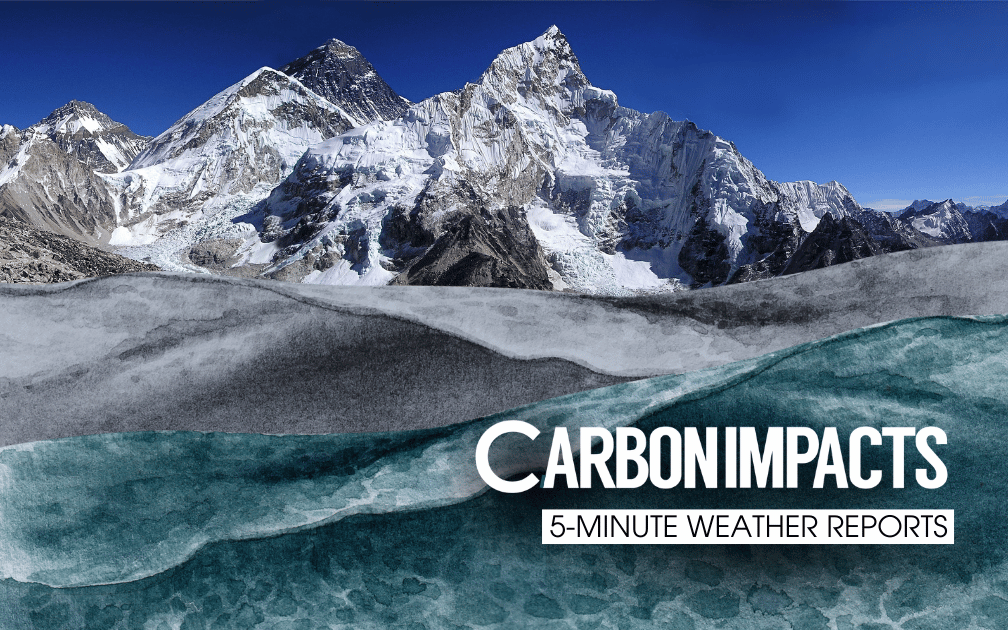Climate change a threat to human well-being, planet health: IPCC report
GHG-induced climate change is already driving widespread losses and damages to nature and people, warns report.
By Editorial Team / Mar 28, 2022

Photo: National Geographic
“Climate change is a threat to human well-being and planetary health” and “any further delay in concerted anticipatory global action on adaptation and mitigation will miss a brief and rapidly closing window of opportunity to secure a liveable and sustainable future for all.”
With these words, the Intergovernmental Panel on Climate Change (IPCC) Working Group II report released on Monday, drove home the urgency of action required in order to save the planet. The report, which is part of the IPCC’s Sixth Assessment Cycle (AR6), focused on the the impacts that climate change is having on ecosystems and human societies,
and considered their vulnerabilities and capacity to adapt to current and future changes. Over 34,000 scientific papers are referenced in the report.
“This report is a dire warning about the consequences of inaction,” said Hoesung Lee, Chair of the IPCC. “Our actions today will shape how people adapt and nature responds to increasing climate risks.”
What the report says
According to the new report, climate change, caused by human greenhouse gas emissions, is already driving widespread losses and damages to nature and people. It has also exposed the human population as well as the natural world to intolerable and irreversible risks, including killing people, damaging food production, destroying nature and reducing economic growth, the report added.
The report warned that losses and damages from climate change will increase rapidly with further warming, and create risks that people and nature will not be able to adapt to. If the world continues to cut emissions at rates currently planned, then the resulting temperature rise will threaten food production, water supplies, human health, coastal settlements, national economies and the survival of much of the natural world, according to the study.
The report also touched upon the physical and mental effects of climate change on the human population. It highlighted how extreme heat is killing people globally, while extreme events such as floods and cyclones, are causing trauma. Increased exposure to wildfire smoke is leading to heart and breathing conditions, the report added.
It recognised that the climate vulnerability of a region is “influenced by past,
present and future social developments, including marginalisation of particular groups”. The report acknowledged that an extreme event was 15 times more likely to kill those living in these areas compared to people in less vulnerable regions.
Cities are a climate change hotspot
According to the report, the health, lives and livelihoods of people living in cities, as well as property and critical infrastructure, including energy and transportation systems, are being increasingly adversely affected by hazards from heatwaves, storms, drought and flooding as well as slow-onset changes, including sea level rise.
“Together, growing urbanisation and climate change create complex risks, especially for those cities that already experience poorly planned urban growth, high levels of poverty and unemployment, and a lack of basic services,” IPCC WGII co-chair Debra Roberts said.
But they are also a large part of the solution, Roberts added. “…green buildings, reliable supplies of clean water and renewable energy, and sustainable transport systems that connect urban and rural areas can all lead to a more inclusive, fairer society.”
The report also, probably for the first time, assessed the role of maladaptation, and in particular its impact on marginalised and vulnerable people. It acknowledged that adaptation can cause problems, particularly when it focuses on single sectors, single risks or
prioritises short-term gains. The report gave the example of seawalls and how they protect people and assets in the short term, but can also encourage risky developments and so increase exposure in the long term.
What the report says about India
Currently, wet-bulb temperatures (a measure that combines heat and humidity) in India rarely exceed 31°C, which is extremely dangerous for humans. But the report warned that if emissions are cut AT the current promised rate, many parts of northern and coastal India would reach extremely dangerous wet-bulb temperatures of over 31°C towards the end of the century. If emissions continue to rise, wet-bulb temperatures will approach or exceed the unsurvivable limit of 35°C over much of India, with the majority of the country reaching wet-bulb temperatures of 31°C or more, according to the report.
Lucknow and Patna are among the cities predicted to reach wet-bulb temperatures of 35°C if emissions continue to rise, while Bhubaneswar, Chennai, Mumbai, Indore, and Ahmedabad are all identified as at risk of reaching wet-bulb temperatures of 32-34°C with continued emissions.
The report also identified India as one of the countries more vulnerable to sea-level rise. By the middle of the century, around 35 million people in India could face annual coastal flooding, with 45-50 million at risk by the end of the century if emissions are high, the report stated. The economic costs of sea-level rise and river flooding for India would also be among the highest in the world.
Saltwater intrusion from sea-level rise along with other extreme events such as floods will affect the country’s agricultural sector, the study stated. Climate change and rising demand mean that about 40% of people in India will live with water scarcity by 2050 compared with about 33% now, according to a study cited by the report.
The report also stated India is already facing economic losses from climate change. The country’s GDP per capita is already 16% lower than it would have been without human-caused warming since 1991, according to a study cited by the IPCC report.
Solutions for a healthier planet
The report emphasised “near-term actions that limit global warming to close to 1.5°C would substantially reduce projected losses and damages related to climate change in human systems and ecosystems, compared to higher warming levels, but cannot eliminate them all”. Current emission policies and commitments put the world on course for warming of about 2.3-2.7°C.
It also suggested adaptation as a way to improve people’s well-being as well as reducing risks from climate change. But the report acknowledged that this path is currently underfunded, and it is not an alternative to emission cuts. If warming continues, the world will increasingly face changes that cannot be adapted to, the report warned.
IPCCTag1Tag2

